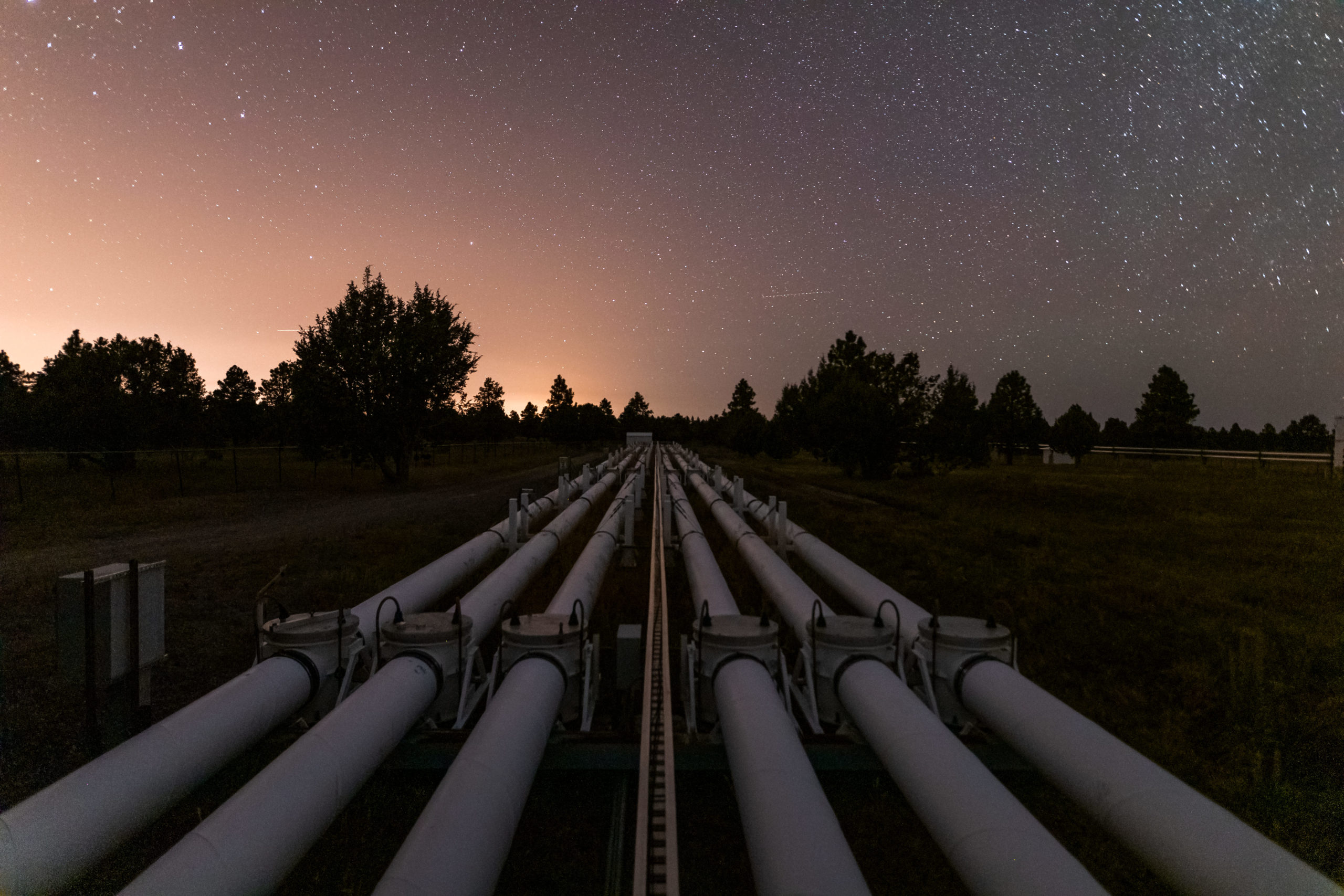Navy Precision Optical Interferometer
Location
Anderson Mesa
Dark Sky Site
Overview
With an array of mirrors spread tens to hundreds of meters apart, the NPOI gathers highly accurate measurements of light from objects in space.
That’s a Mouthful—What is it?
The Navy Precision Optical Interferometer (NPOI) is a collaborative effort between the U.S. Naval Observatory, the Naval Research Laboratory, and Lowell Observatory.
Interferometers are not like conventional reflecting telescopes such as the Lowell Discovery Telescope. Instead of employing a single primary mirror, NPOI uses an array of up to six mirrors spaced tens to hundreds of meters apart to precisely direct up to six beams of light from a star to a point. Extraordinary image detail can be derived from the resulting data.
NPOI is laid in a 3-armed “Y” pattern, with each arm extending for 250 meters (820 feet). These so-called baselines are the largest of any interferometer of this type in the world. Each arm contains a network of mirrors and associated equipment for collecting light, which is then directed through pipes that have been evacuated of air. The light is eventually carried to a facility where all the collected light is combined to form an image.
Construction began in 1992 and the facility has been expanded several times, with another one planned that will see the arms each span 420 meters–more than the length of four football fields.
Research with NPOI

NPOI can record images of stars and optically separate distant pairs of stars so close together that they appear as a single star in even the largest conventional telescopes.
NPOI has the ability to measure the precise relative positions of stars across the sky, which the Naval Observatory uses as a reference system for the determination of positions on Earth and in space and for monitoring time keeping.